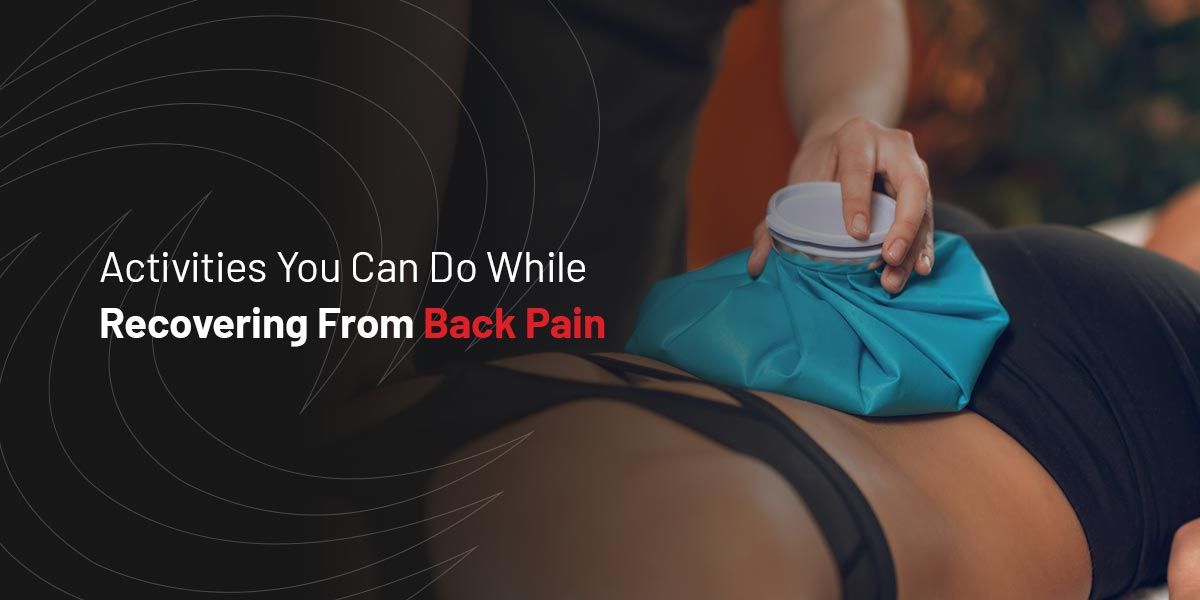
Millions of Americans struggle with back pain. They may have lifted something too heavy at work, twisted the wrong way while renovating the house or been involved in an accident resulting in pain. Back pain is one of the most common medical conditions in the U.S. — approximately 8% of adults struggle with chronic back pain.
You can do a few things at home to find relief if you’re recovering from back pain. You should also avoid specific activities to prevent inflammation and further injury. Learn ways you can find relief and how to recover from lower back pain below.
If you just started experiencing back pain, use ice for the first day or two to reduce the inflammation. Once you’ve used ice for a while, you can switch to heat, which will help alleviate painful symptoms. You can even alternate between ice and heat, rotating them as needed to help you with your inflammation and pain.
You can stand, sit and lay in specific positions to help stay comfortable throughout the day. For example, you can lie in bed with a pillow between your legs, sit with a pillow behind your back or use a stool to support one of your feet while standing.
Slow and gentle stretches can help relieve pain and keep your back from getting too tense while it heals. Try pulling your knees to your chest while lying in bed or bending slightly backward while standing with your hands on your lower back for support. Your doctor may also recommend specific stretches to aid your lower back pain recovery.
During the first week or so, OTC ibuprofen can help reduce pain and inflammation. While it’s essential not to rely on these medications long-term, they can provide enough relief to get you through the first week, allowing you to stay somewhat mobile,
When it’s time for bed, try sleeping with your knees pulled to your chest to relieve pressure on your spine and back muscles. If you can’t rest on your side, place a pillow or rolled towel under your knees to help alleviate pressure.
While it can be uncomfortable to move with a back injury, staying sedentary during recovery can limit blood flow to your back, reducing the delivery of oxygen and nutrients. Adequate blood flow is essential to help your back heal, so it’s a good idea to get up and walk around every few hours. You can also try yoga or other light exercises. However, you want to be careful not to overdo it, meaning vigorous exercise or sports will have to wait until your doctor approves.
It’s essential to maintain good posture when sitting or standing. Try not to slouch, as it can cause significant strain on the back, including pressure on the joints, discs and muscles.
If you’re lifting heavy objects or wearing a heavy backpack regularly, the extra weight can contribute to significant back pain. If you have to lift heavy items for work, see if there’s special equipment you can use or ask someone for help, so you’re not bearing all the weight yourself.
On average, U.S. adults sit for about six and a half hours daily, usually due to work requirements. Sitting for long periods without a break can weaken muscles, bones and blood circulation, contributing to back pain. If you work a desk job, try to take a break every thirty minutes to stand up and stretch. You should take a longer break every few hours to go on a short walk and get your blood flowing.
A poor diet reduces your nutrient intake, which can cause your bones to become weaker and increase your risk of injury. Poor eating habits can also cause weight gain, which can strain your back and other body parts. Healthy eating will help you get the nutrients you need and reduce pressure on your joints. You can also try an anti-inflammatory diet to help with inflammation.
Back pain is more common among smokers than non-smokers. Smoking limits the oxygen in your blood, preventing adequate delivery to your bones and tissues. The lack of nutrients can cause your spinal discs to degenerate and smokers are at a higher risk of developing conditions that cause back pain.
If you’ve experienced a back injury, taking care of yourself is necessary to improve your pain and condition. However, specific symptoms can signify more serious conditions and require an appointment with your doctor as soon as possible. These symptoms include:
Your doctor will perform tests and inquire about your medical history to determine if there is an underlying cause for your back pain. They can prescribe medication if necessary and give you ways to manage your pain at home while recovering.
More severe symptoms require a trip to the emergency room as they require immediate medical attention. These symptoms include:
These symptoms can signify a severe medical problem and require immediate medical intervention. If you or a loved one experience these symptoms alongside back pain, it’s best to take a trip to the emergency room.
DISC is an orthopedic spine center that helps treat various spinal conditions in the greater Phoenix, Arizona, area. Our surgeons can help you find relief from your pain using the least invasive treatment options available. Our care is customized to our patient’s needs to help them find complete relief. We’ll help you recover from a lower back injury with minimal disruption to your life during your recovery.
Our goal is to restore your lifestyle and relieve you of pain using non-operative and minimally invasive treatments where possible. Our surgeons are leaders in the field and will work with you to create a treatment plan that suits your needs. Contact us today to schedule an appointment or learn more about our treatment options!